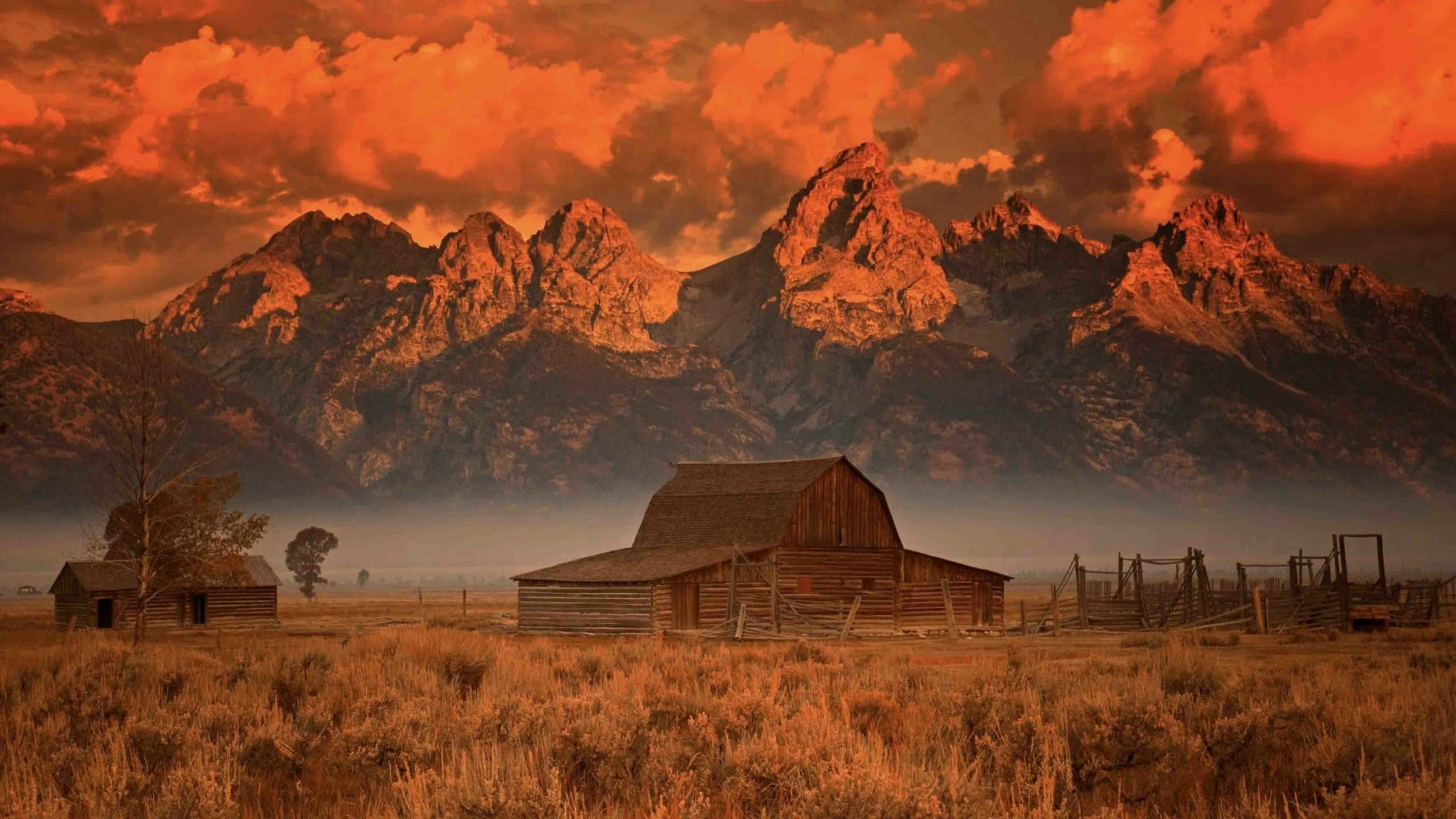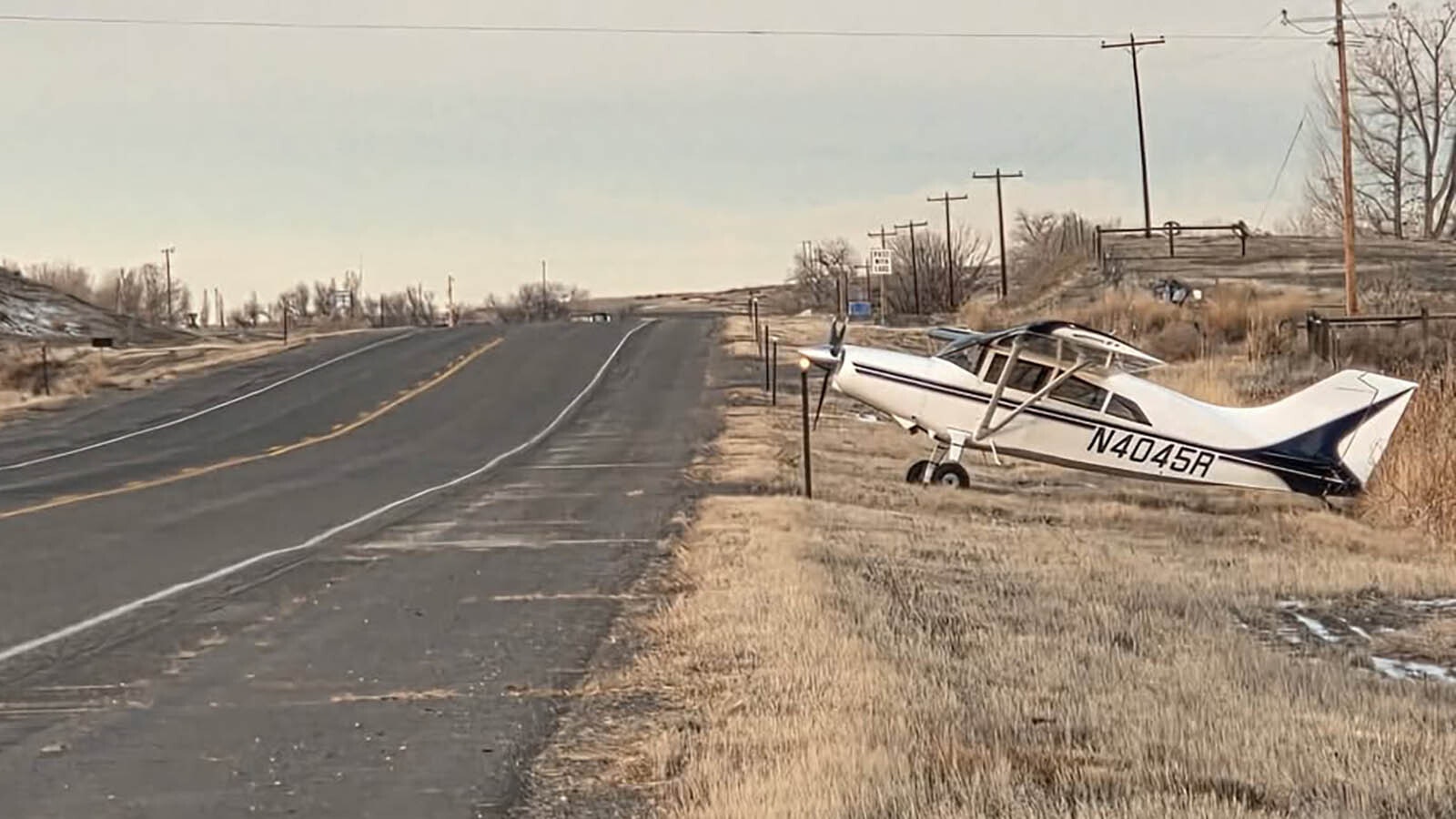It’s an image familiar to anyone with an interest in the Grand Teton mountain range. A shot of the sunrise with the Tetons in the background and a weathered barn in the foreground.
What many people don’t realize, perhaps, is that there are two different structures that appear in the famous photos. In fact, Steve Moulton pointed out that many people get the barns mixed up.
“The T.A. Moulton barn is the furthest barn to the south on Mormon Row, and it has the peaked roof, a very steep peak on the roof, and there are no other buildings surrounding it,” Moulton said. “The John Moulton barn has several buildings surrounding it – it is a larger barn that has a big gambrel-style roof on it. So that’s how you tell the two apart.”

The Moulton family, which built the two structures, was one of several Mormon families who settled in the Jackson Hole area in the early 1900s. Steve is a direct descendent of Thomas Alma Moulton, who built the famous barn with the steep-pitched roof in three stages, beginning in the mid-1910s.
“The first (stage was) the square box built in 1913, then in 1928 more logs were added to the top of the box and the pitched roof was added,” Moulton told Cowboy State Daily. “This portion of the barn housed mostly their milking operation. Much of their income was from milking cows.
In 1934 the south lean-to was added,” he continued. “This is where they harnessed the teams and I assume kept horses overnight there at times. In 1939 they added the north lean-to and used it for a hog shelter.”
When the National Park Service approached landowners about acquiring properties on Mormon Row in the early 1950s, Alma held out until 1963, when he sold 159 of his 160 acres to Grand Teton National Park.
“Rockefeller was (putting up) the money to buy these holdings in the Park,” Steve explained. “And they were offered a good price for their place, and the Park Service was pushing them hard to sell.
“Now here were two brothers, with families, trying to make a living on 160 acres,” he continued. “Well, you know, that doesn’t happen. And they decided to take the money, and so we (Alma’s son Harley and his family) moved to Cody at that time.”
The remaining acre was withheld and deeded to Alma’s other son, Clark, (Steve’s uncle), who with his wife Veda chose to keep the parcel for future generations.
“That stayed on that side of the family until 2018,” Steve said, “then they sold that and it is now back to being a part of (Grand Teton National Park).”
Even though the T.A. Moulton barn has been dubbed “the most photographed barn in America,” the Moulton family receives no benefit from the exposure.
“If we had a nickel for every photo, we’d be rich, of course,” Steve said. “You know, Conrad Schwiering, he was a major artist in the Jackson area in the late 50s, he would come and bring people and he would have art classes. They’d get out there and draw the barn and paint it and whatnot.”
Steve himself became part of an iconic rendering of the barn.
“In about 1957, John Clymer, he was a famous Western illustrator,” Moulton said. “Apparently, he drove by one day and he saw some kids out in the barnyard playing with a calf. Well, the only children that could have been was my older brother, me and my sister. And he went home and he painted a picture, an illustration of that, and that illustration ended up on the front cover of the Saturday Evening Post.”
Steve recalled another instance in which he realized the family’s land was something special.
“In 1961 we had moved to Cody, and I remember going back in 1962, and driving by the barn – I guess I was maybe 7 – and they were filming ‘Spencer’s Mountain,’” he said. “And they used the barn to do a milking scene, Henry Fonda is in the barn milking. And my uncle Clark was there, he had to show Henry how to milk the cows, because he didn’t know how.”
The John Moulton property, which is where the gambrel-roof barn sits, was developed more fully than T.A.’s, as John took a lifetime lease on his homestead after selling the property to the National Park Service in 1953.

“He fooled the park and lived to be 103,” Steve Moulton said. “His family was able to stay there until 1991 – that is why there are more buildings on the John homestead, because they were there much longer.”
But the Moulton Barns are more than just props for photos – they are still standing because of concerted efforts by locals and the Moulton family to preserve a piece of Wyoming’s history.
“The Park Service, for so many years, their idea was to eliminate all of that,” Steve said. “They didn’t want the barns on there. They wanted them just to fall down and be gone. But my wife, Candy, who’s a journalist, contacted the State Historic Preservation Office.”
Steve said Candy coordinated with the SHPO and the National Park Service, which in 1994 finally gave permission to the family to restore the T.A. Moulton barn.
“Contractors from Jackson gave us materials, and a lot of different family members from all over,” Steve said. “People showed up from the ages of three months to, well, my uncle Clark was 81 at the time, and we put a new roof on that north side and did some other work – and it saved the barn.”
Steve said the restoration and community support seemed to convince the National Park Service that the photogenic buildings had historical value.
“Then the Park Service realized how much people wanted to see those buildings, and they were taking a lot of pictures of it and they finally got it in their head that people liked the history and wanted to see that stuff,” he said. “And so after that, Habitat for Humanity came in, they did a lot of work. The Park Service has done a lot of work on the T.A. barn, on the John barn, and some of the other buildings.”
In 1997 the area was added to the National Register of Historic Places. So now, for years to come, the two most famous barns in America will continue to draw professional and amateur photographers alike to capture that iconic image.
“In the summertime, before daylight, the cars are just streaming in one right after the other,” Steve said, “because people want to be there when that first bit of sunlight comes over behind them and shines on the face of those barns.”





